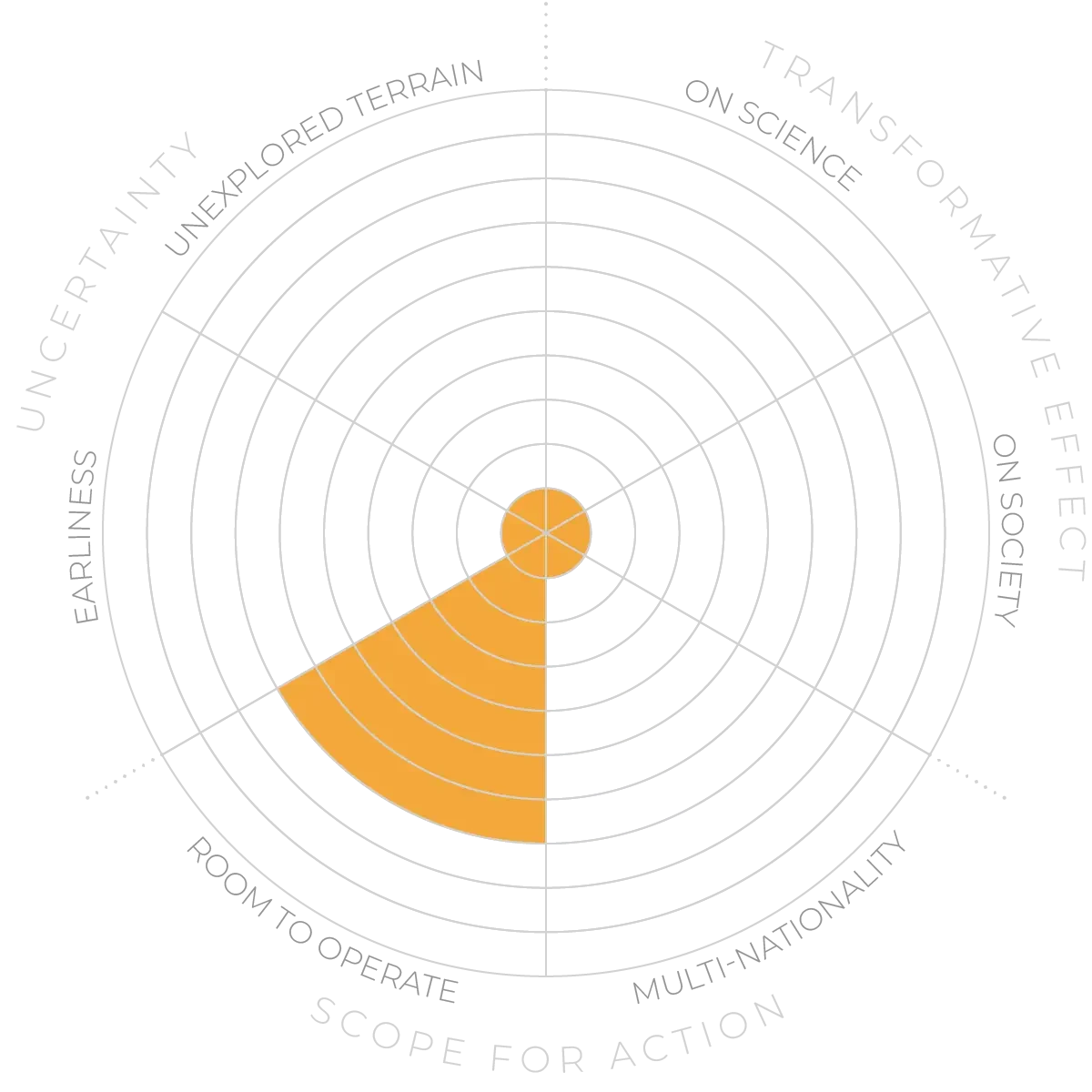Emerging technologies like AI have considerable potential for improving our understanding of language and by extension the evolution of human cognitive capacities.3
Future Horizons:
10-yearhorizon
Machine language becomes ubiquitous
There is widespread evidence for machine-preferred words and constructions in human-generated texts, prompting new approaches to avoid model collapse in future generations of LLMs. Quantised language models, which compress much of the information from LLMs into smaller models, lead to improvements in one-shot learning and generalisation, including between languages.
25-yearhorizon
New machine-language architectures are developed
New architectures that reduce the chances of model collapse improve machine-to-machine communication. Linguistic theories are refined and extended to encompass artificial natural languages. Multimodal AIs allow human-like complex reasoning.
Large language models (LLMs) now achieve high accuracy on many language-related tasks.4 While they are built on neural networks,5 LLMs have a completely different architecture to that of the human brain.6 Nevertheless, by exploring their capabilities and comparing their behaviour with that of humans, we may gain insights into the mechanisms by which languages are learned,7 including how our minds infer the structures and rules of a language.8 If this bears fruit, the result will be improved theories of language and of the relationship between language and other high-level cognitive capacities:9 for instance, the degree to which complex reasoning depends on language.10
There is considerable uncertainty about the future of LLMs and other AIs when it comes to language. Will they develop ever more human-like language abilities, or will they reach a plateau imposed by their generalist architecture?11 LLMs acquire language in a “hyper-empiricist” fashion, from massive amounts of training data. Will new architectures emerge that allow LLMs to learn from a more human-like input? Will such models truly understand language, or merely mimic it?12
Relatedly, a key future goal of AI models is to increase their multilingual coverage, including “under-resourced” languages, where training data is often sparse.13 If this is achieved, a key goal should be to leverage LLMs to document and preserve endangered languages,14and to revitalise those languages that are under-represented on the world stage and online.15 For instance, improved retrieval technologies could be used to create collections of readable texts, which are currently unavailable for many languages.16
Contact between minority and Indigenous languages, and global languages like English, can result in language decline, but also in language change through contact. Computer models of language, including LLMs, can also shed light on how and why languages change over time — an inevitable process that happens to all languages. Research in cultural evolution shows that successive generations of language users implicitly shape their language,17 for instance making it both easier to learn and more useful for communication. Building scaled-up models of communicating agents can help us answer questions about the effects of individual-, group- and population-level dynamics on this process.
Machines and language - Anticipation Scores
The Anticipation Potential of a research field is determined by the capacity for impactful action in the present, considering possible future transformative breakthroughs in a field over a 25-year outlook. A field with a high Anticipation Potential, therefore, combines the potential range of future transformative possibilities engendered by a research area with a wide field of opportunities for action in the present. We asked researchers in the field to anticipate:
- The uncertainty related to future science breakthroughs in the field
- The transformative effect anticipated breakthroughs may have on research and society
- The scope for action in the present in relation to anticipated breakthroughs.
This chart represents a summary of their responses to each of these elements, which when combined, provide the Anticipation Potential for the topic. See methodology for more information.



